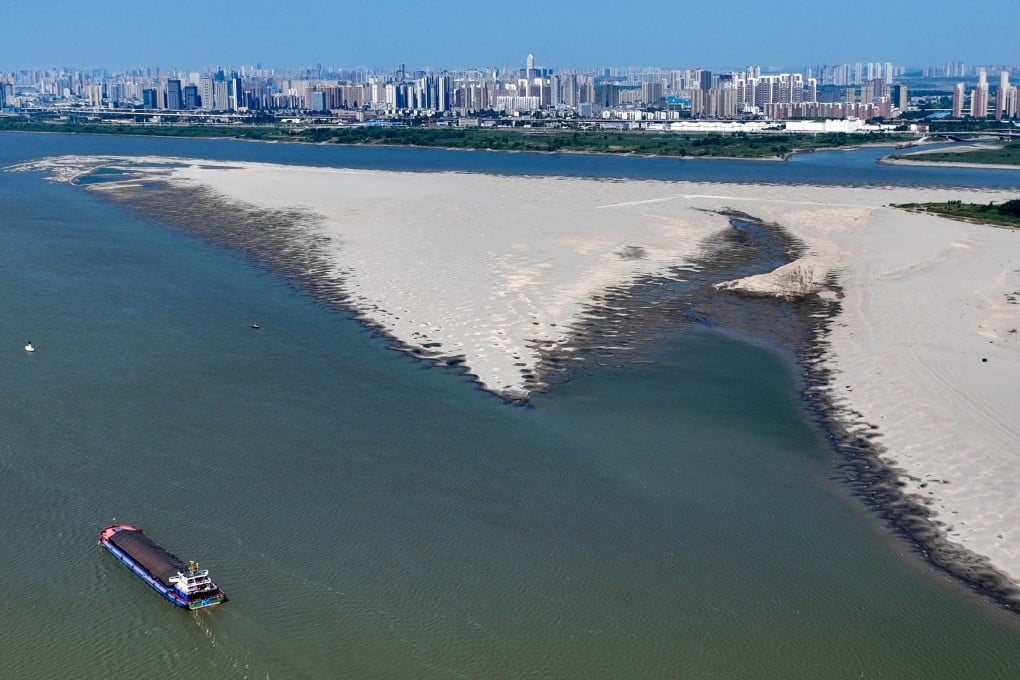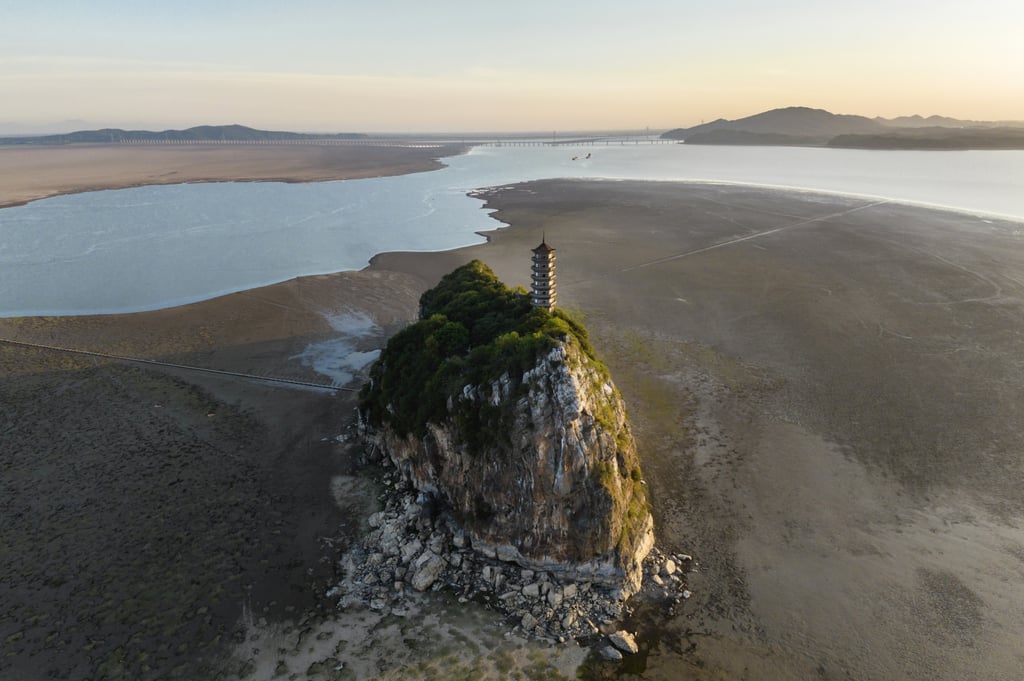Yangtze River, lakes at record low levels as heatwaves, drought hit southern China
- Longest river in Asia and China’s two biggest freshwater lakes at their lowest since records began, while other rivers are drying up
- Parts of the south have been sweltering through high temperatures since last month, and forecasters say there is more to come

At Hankou, a key monitoring point on the Yangtze River in the central city of Wuhan, the water level had dropped to 17.54 metres on Saturday – about 6 metres lower than the average in recent years. It was also the lowest level seen for this time of year since records began in 1865, the official Science and Technology Daily reported on Sunday, citing disaster response authorities.
The Yangtze is the longest river in Asia – stretching 6,300km from the Tibetan Plateau in the west to the East China Sea near Shanghai – and the region is home to about one-third of China’s population.

Meanwhile, the nation’s two largest freshwater lakes – Poyang and Dongting, which connect to the Yangtze – have seen their lowest levels since records began in 1951.
The biggest, Poyang Lake in eastern China, was at 12 metres on August 6. That meant it had entered the dry season earlier than it ever had since records began, state news agency Xinhua reported. It said this had happened 100 days earlier than the average in previous years.
Heatwaves and drought have affected some 830,000 people and about 640,000 hectares of arable land across six provinces of southern China this summer, Xinhua reported on Thursday.
The Yangtze’s record low level has been caused by low rainfall in the river basin, reduced water flowing in from its upper reaches and hotter temperatures speeding up evaporation, according to the Science and Technology Daily report.
Other rivers are drying up, including in Huaining, in southeastern Anhui province, resulting in water shortages across eight neighbouring counties, according to news site The Paper. In Chongqing in the southwest, seven rivers and a reservoir have dried up, affecting about 276,000 people and 82,400 animals, the report on Sunday said.